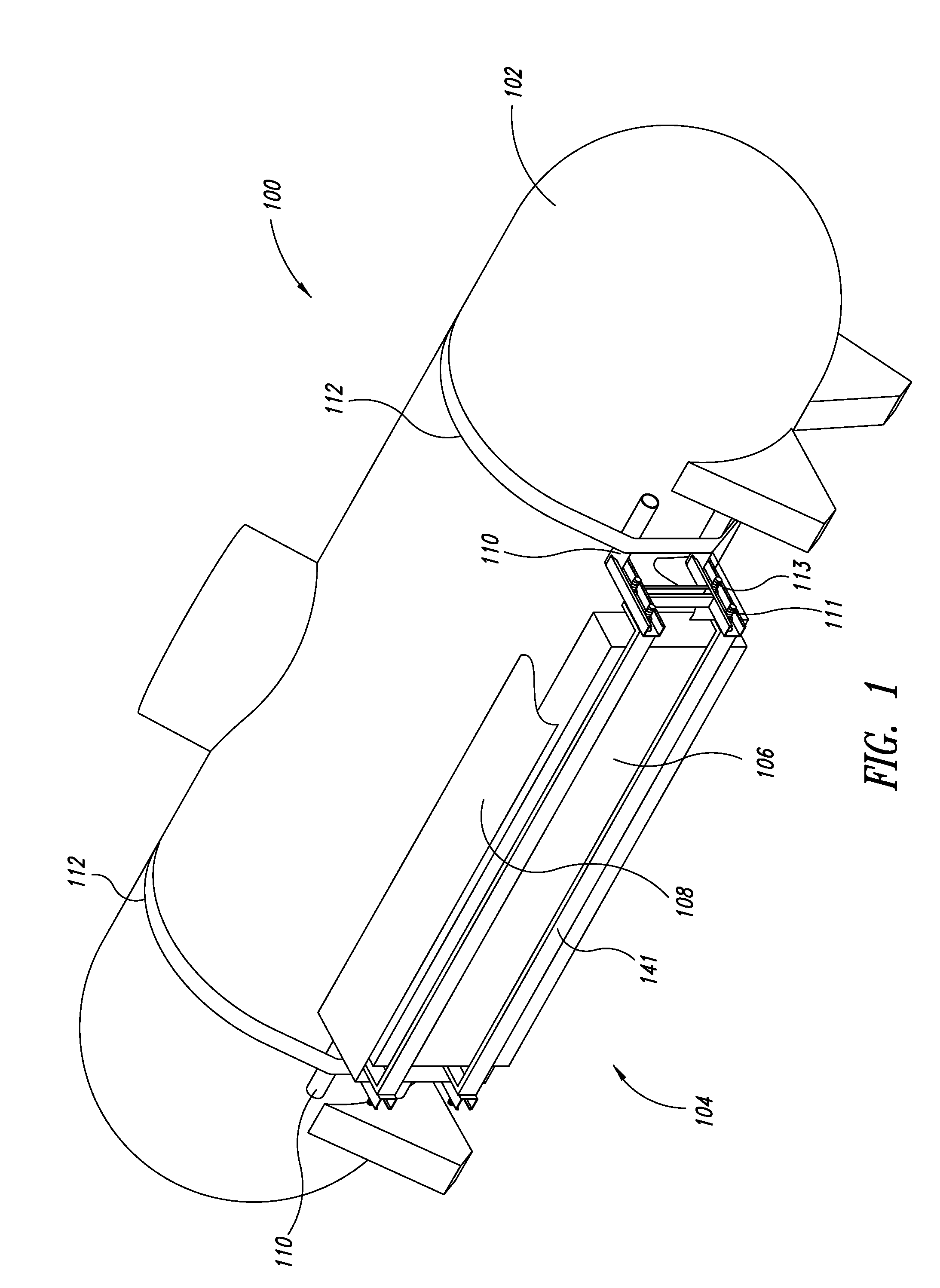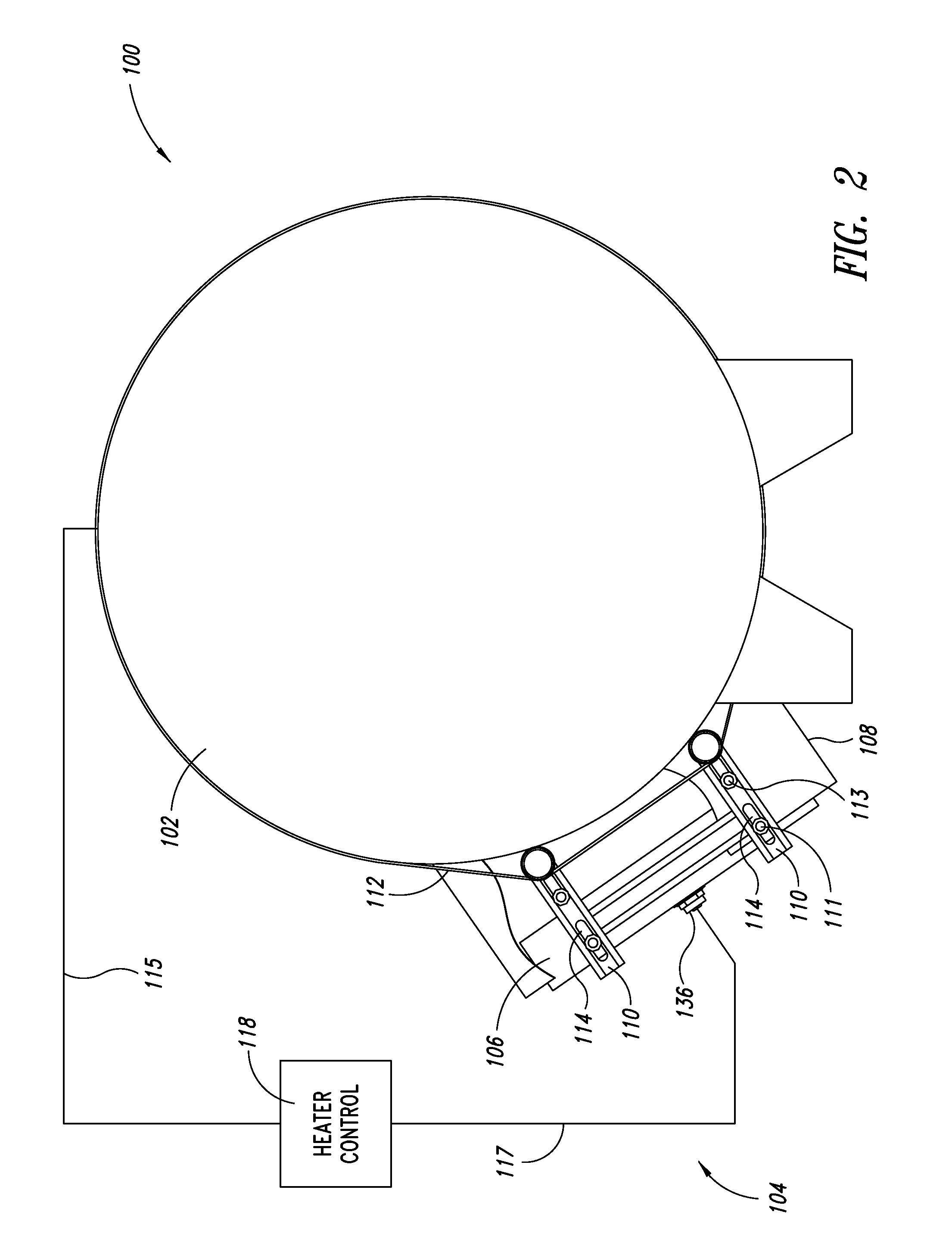Heater for liquefied petroleum gas storage tank
a technology of liquefied petroleum gas and heater, which is applied in the direction of catalytic material combustion, domestic stoves or ranges, container discharge methods, etc., can solve the problems of accelerating pressure drop, affecting the operation of appliances and equipment, and increasing the possibility of unacceptable pressure loss
- Summary
- Abstract
- Description
- Claims
- Application Information
AI Technical Summary
Benefits of technology
Problems solved by technology
Method used
Image
Examples
Embodiment Construction
[0040]FIGS. 1 and 2 show an LPG storage system 100 according to an embodiment, which includes an LPG tank 102 and a catalytic tank heater system 104. The heater system 104 includes a catalytic heater element 106, a heater control 118, a shroud 108, mounting brackets 141, support frames 110, and straps 112. The support frames 110 are coupled to the tank 102 by the straps 112. The catalytic element 106 is coupled to the mounting brackets 141, which extend between the support frames 110, and are coupled thereto by first fasteners 111 via slot apertures 114 of the support frames. The slot apertures 114 permit adjustment of the position of the catalytic element 106 relative to the wall of the tank 102, to provide for appropriate air circulation and transfer of radiant heat from the element to the tank. The support frames 110 hold the catalytic element 106 spaced from and facing the wall of the tank. Along a line where the catalytic element 106 lies closest to the tank, the distance betwe...
PUM
 Login to View More
Login to View More Abstract
Description
Claims
Application Information
 Login to View More
Login to View More - R&D
- Intellectual Property
- Life Sciences
- Materials
- Tech Scout
- Unparalleled Data Quality
- Higher Quality Content
- 60% Fewer Hallucinations
Browse by: Latest US Patents, China's latest patents, Technical Efficacy Thesaurus, Application Domain, Technology Topic, Popular Technical Reports.
© 2025 PatSnap. All rights reserved.Legal|Privacy policy|Modern Slavery Act Transparency Statement|Sitemap|About US| Contact US: help@patsnap.com



